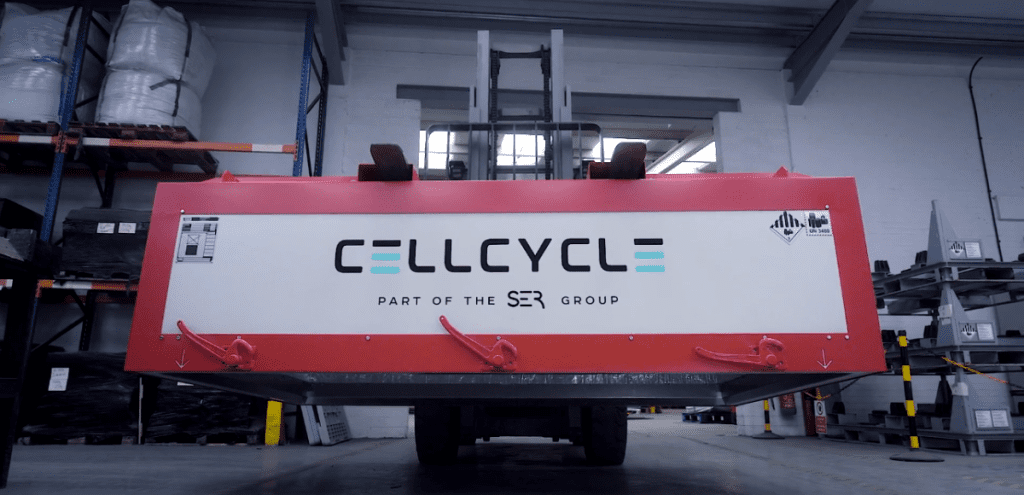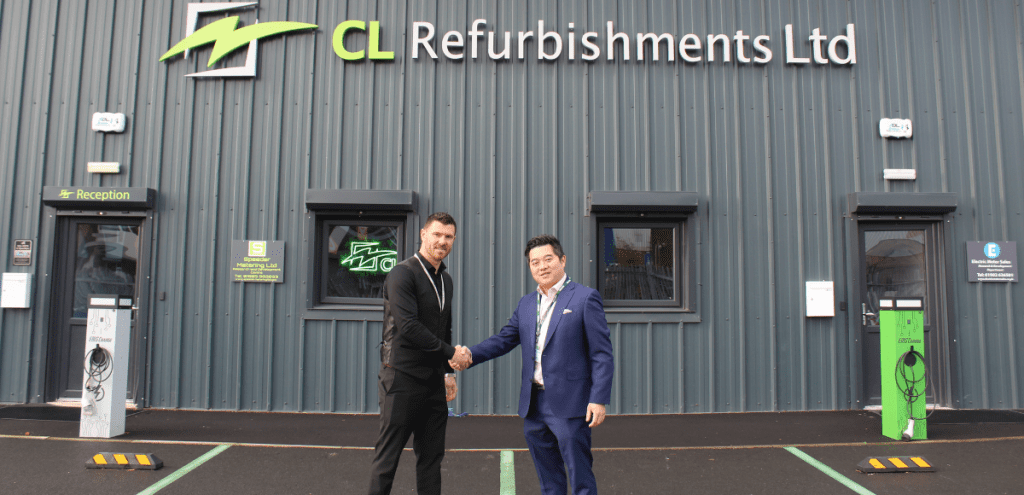1. Introduction
Battery longevity is a critical concern for many industries, from automotive to electronics, as it directly impacts performance and reliability. Understanding the state of health and remaining useful life of a battery is essential for efficient operation and maintenance planning. This blog explores the art of measuring battery capacity and state of health, providing insights and strategies to optimize battery longevity. Whether you are a manufacturer, engineer, or consumer, mastering these techniques will lead to improved performance, reduced downtime, and increased cost savings. Read on to discover the key factors and best practices for maximizing battery lifespan.

Resource from: https://towardsdatascience.comn
2. Understanding battery longevity
Understanding battery longevity is the first step to optimizing its lifespan. Battery longevity is determined by various factors, including battery chemistry, usage patterns, operating conditions, and maintenance practices. n
Battery chemistry plays a crucial role in determining the overall lifespan of a battery. Different chemistries, such as lithium-ion, lead-acid, or nickel-cadmium, have different characteristics and degradation rates. It is important to understand the specific chemistry of your battery and its limitations.n
Usage patterns and operating conditions also impact battery longevity. Factors such as depth of discharge, charge rates, temperature, and humidity can affect the performance and lifespan of the battery. Implementing proper usage guidelines and maintaining optimal operating conditions can help prolong the battery life.n
Regular maintenance practices, such as proper charging and discharging cycles, adequate storage conditions, and routine inspections, are essential for maximizing battery longevity. Monitoring the state of health and remaining useful life of the battery through accurate measurement techniques is also crucial for effective maintenance planning.
In the next section, we will delve into the various techniques and strategies for measuring battery capacity and state of health accurately. Understanding these measurements will enable you to make informed decisions about the battery’s remaining useful life, allowing for timely maintenance and replacement, and ultimately optimizing battery longevity. Stay tuned!
3. The importance of measuring remaining useful life (RUL)
Understanding the remaining useful life (RUL) of a battery is essential for effective battery management and optimization. The RUL refers to the expected lifespan of a battery based on its current state of health and usage patterns. By accurately measuring the RUL, you can make informed decisions about when to perform maintenance, replace the battery, or optimize its usage.
Measuring the RUL helps you avoid sudden battery failures and unexpected downtime. It allows you to plan ahead and schedule preventive maintenance or replacements before the battery reaches the end of its lifespan. This proactive approach can save you time, money, and ensure uninterrupted power supply.n
Accurate RUL measurement also enables you to optimize battery usage. If a battery has a long RUL remaining, you can strategically plan its usage to extend its lifespan. On the other hand, if a battery has a short RUL remaining, you can prioritize its replacement or allocate it to less critical applications.
In the next section, we will explore various techniques and strategies for measuring the RUL of batteries. Stay tuned to learn how to effectively manage and optimize your battery’s remaining useful life.
4. Evaluating battery health and performance
In order to accurately measure the remaining useful life (RUL) of a battery, it is crucial to evaluate its health and performance. This involves assessing the battery’s capacity, internal resistance, and voltage behavior over time.n
One method for evaluating battery health is through capacity testing. This involves fully charging the battery and then discharging it at a controlled rate while measuring the amount of energy it can deliver. By comparing the measured capacity to the battery’s rated capacity, you can determine its health and estimate its remaining useful life.n
Another important factor to consider is the battery’s internal resistance. Higher internal resistance can indicate degradation and reduced performance. By measuring the resistance periodically, you can track any changes and anticipate when the battery may need maintenance or replacement.n
Voltage behavior is also a key indicator of battery health. A healthy battery will maintain a stable voltage throughout its discharge cycle. Monitoring voltage fluctuations can provide insights into the battery’s condition and help determine its remaining useful life.
In the next section, we will further explore these evaluation techniques in detail and discuss other strategies for effectively measuring and managing the remaining useful life of batteries. Stay tuned for valuable insights on optimizing battery longevity.
5. Techniques for measuring RUL
Now that we have a basic understanding of the factors that contribute to measuring a battery’s remaining useful life (RUL), let’s delve into specific techniques to accurately assess battery health and longevity.
One commonly used technique is impedance spectroscopy. This method involves applying an alternating current to the battery and measuring the impedance response across a range of frequencies. By analysing this impedance spectrum, you can gain valuable insights into the battery’s internal chemical reactions and identify any signs of degradation or aging.
Another powerful tool for measuring RUL is Coulomb counting. This technique involves accurately measuring the amount of charge that goes into and comes out of the battery over time. By tracking the battery’s discharge cycles and comparing the measured charge to its rated capacity, you can estimate its remaining useful life with a high level of accuracy.
Additionally, advanced techniques such as electrochemical impedance spectroscopy and voltage relaxation analysis can further enhance the accuracy of RUL measurement. These methods provide detailed information about the battery’s chemical state, helping to identify any signs of performance degradation or imminent failure.
In the upcoming section, we will discuss the importance of effectively managing the remaining useful life of batteries and explore strategies to optimize battery longevity. Stay tuned for valuable insights on prolonging the life of your batteries and maximizing their performance.
6. Best practices for optimizing battery longevity
In the previous blog section, we explored different techniques for accurately measuring a battery’s remaining useful life (RUL). Now, let’s shift our focus to best practices for optimizing battery longevity.n
-
- n
- Use the right charger: Using a charger specifically designed for your battery type can greatly extend its lifespan. Avoid using chargers with excessive voltage or current, as this can lead to overcharging, overheating, and premature deterioration.
-
- n
- Don’t over-discharge: It’s important to avoid fully discharging your battery whenever possible. Continually discharging a battery to its lowest capacity can cause irreversible damage and shorten its useful life. Try to recharge your battery before it reaches critically low levels.
-
- n
- Store batteries properly: When not in use, store batteries in a cool, dry place. Extreme temperatures, whether hot or cold, can negatively affect battery performance and longevity. If you won’t be using a battery for an extended period of time, consider partially charging it before storage.n
-
- Avoid overloading: Overloading a battery by connecting too many devices or drawing excessive power can shorten its lifespan. Be mindful of the power requirements of your devices and make sure not to exceed the battery’s recommended capacity.
-
- n
- Conduct regular maintenance: Periodically inspect your batteries for signs of physical damage, leakage, or corrosion. Clean the battery terminals if necessary and ensure a tight connection. This simple maintenance routine can help prolong the life of your batteries.n
By following these best practices, you can optimize the longevity of your batteries and get the most out of their performance. In the next section, we will discuss the role of battery management systems and how they can help in maximizing battery life. Stay tuned for valuable tips and insights!
7. Case studies: Real-life examples of successful battery optimization
In this next section, we will dive into real-life case studies that demonstrate the effectiveness of implementing battery optimization techniques. These examples will provide valuable insights and practical tips to help you maximize battery life.n
We will explore scenarios where users have successfully extended the lifespan of their batteries by following the best practices discussed earlier. From smartphone users who have seen significant improvements in battery performance to businesses that have optimized the longevity of their backup power systems, these case studies will showcase the tangible benefits of proper battery management.n
By analysing these success stories, you will gain a better understanding of the impact that optimization techniques can have on battery longevity. Furthermore, you will be inspired to implement these strategies in your own life, whether it’s for personal devices or larger-scale applications.
Stay tuned for the illuminating case studies that will follow. These real-life examples will provide further evidence of the importance of optimizing battery longevity for both individuals and organizations.
8. The future of battery technology and longevity measurement
In addition to learning from real-life case studies, it is important to explore the future of battery technology and longevity measurement. As technology continues to advance, so does our understanding of how to optimize battery life. In this section, we will discuss the latest trends and innovations in battery technology that aim to improve longevity.
One area of focus is the development of smarter and more accurate methods for measuring remaining useful life. Researchers are working on algorithms and predictive models that can estimate the lifespan of a battery with greater precision. By leveraging machine learning and data analysis techniques, these advancements will enable us to make more informed decisions about battery usage and maintenance.
Furthermore, new battery technologies are being developed that promise longer lifespans and faster charging times. From solid-state batteries to lithium-air batteries, these innovations have the potential to revolutionize the way we power our devices and vehicles.n
By staying up to date with the latest advancements, you can stay ahead of the curve and ensure that you are optimizing battery longevity to the fullest extent. In the next section, we will delve into these exciting developments and discuss how they can be utilized to extend the lifespan of your batteries.
9. Conclusion: Taking control of battery life through effective RUL measurements
In conclusion, mastering the art of measuring remaining useful life (RUL) is crucial for optimizing battery longevity. As we have explored in this blog, there are various methods and technologies being developed to enhance our understanding of battery lifespan.
By utilizing algorithms and predictive models, we can estimate the remaining useful life of a battery with greater precision. This enables us to make informed decisions about battery usage and maintenance, ultimately extending their lifespan.
nThe key to maximizing battery lifespan lies in proactive monitoring, optimizing charging cycles, and understanding the factors that influence battery degradation. With the right knowledge and tools, you can take control of battery life and ensure that your devices and vehicles are powered efficiently for years to come.
Additionally, no matter the choice between a Li-ion or Lithium battery, it will eventually exhaust its usability. Imagine the potential environmental consequences of millions of tons of spent batteries, resulting in unforeseen pollution. Proper disposal of these discarded batteries could greatly aid in protecting our environment and conserving our natural resources. This is precisely the service our fully accredited team provides. We repurpose the valuable elements of these batteries, thereby granting them a renewed lifecycle. Contact us here to learn more.


